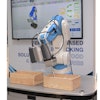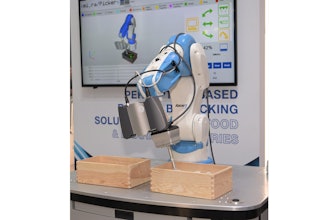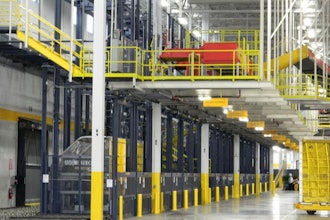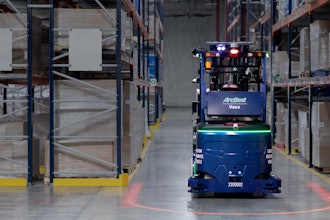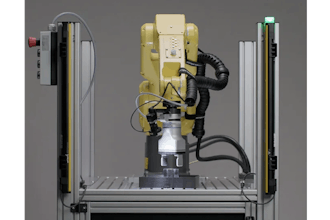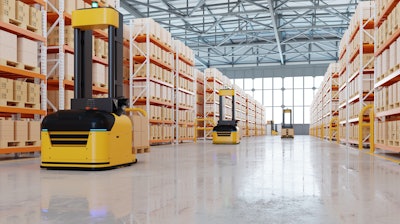
The manufacturing industry is no stranger to automation. Until recently, however, most has been in the form of stationary robotics. The recent rise of automated guided vehicles (AGVs) promises to bring robots’ advantages to other workflows. As a result, more manufacturers are considering the benefits of AGVs.
AGVs saw a considerable uptick in adoption amid COVID-related labor challenges, and now experts predict the market’s value will surge to $9.38 billion by 2030. Understanding what these machines offer is vital to capitalize on that movement.
Benefits of AGVs
Automated guided vehicles share many advantages of stationary robotics but expand them to mobile workflows. That has several tangible benefits for manufacturers today. Here are some of the most significant.
Increased Efficiency
The most direct benefit of AGVs is that they’re more efficient than manual processes. Material moving and picking are often some of the most inefficient workflows in a warehouse, largely due to slow travel times and human errors. AGVs provide solutions to both sides of the issue.
AGVs can carry more at once than people, resulting in fewer trips. They can also move faster without sacrificing their control or safety, and automation removes the risk of human errors like picking the wrong item, eliminating unnecessary travel. Many supply chain organizations struggle to maintain adequate staffing levels, and AGVs can boost productivity by managing more without additional workers.
Improved Safety
Using AGVs instead of manual material handling processes can also reduce workplace injuries. Workers who repeatedly lift and carry heavy objects risk developing musculoskeletal disorders. Private sector employees experienced 247,620 of these ergonomic injuries in 2020 alone, each causing a median of 14 days away from work.
AGVs eliminate many of these incidents by handling the most injury-prone workflows while humans can focus on other, safer work. They may also reduce incidents like collisions caused by human forklift operators because AGVs cannot get distracted.
Higher Capacity
Another of the most important benefits of AGVs is their ability to expand manufacturers’ capacity. Employing these machines to manage some of your material handling workflows frees workers to focus on other tasks. Consequently, you can accomplish more in a given time with your current workforce, making it easier to expand operations despite labor challenges.
AGVs make it easier to expand capacity even if labor shortages aren’t an issue. These vehicles require less space than other equipment like forklifts or conveyor systems. As a result, you can capitalize on your current floor space, enabling higher storage volumes without needing a new building.
Lower Ongoing Costs
AGVs can also reduce your operating expenses. Like all robotic systems, AGVs typically feature high price tags but require minimal investment after the initial purchase. They carry no ongoing costs apart from periodic maintenance and electricity to power them, so they’re cheaper than other alternatives.
The median wage for a material mover is $14.58 an hour, adding to upwards of $30,000 a year. That doesn’t include potential costs from lost productivity, human error or injuries. While humans are a better fit for tasks requiring flexibility and nuance, automation excels at the repetitive work AGVs accomplish, making the latter the most cost-effective option.
Enhanced Traceability
A more easily missed benefit of AGVs is their traceability. AGVs are electronic and often rely on artificial intelligence (AI) functionality to navigate, so they generate recordable data points with every action. You can review this information to gain insight into your operational efficiency, potential bottlenecks, warehouse organization and more.
Data over where AGVs travel throughout the workday and where they stop the most reveals where your most in-demand items are and if any parts of the facility cause inefficiencies. You can then adapt as necessary to enable more efficient picking workflows.
Disadvantages of AGVs
The benefits of AGVs are impressive, but it’s important to consider them alongside their disadvantages. Viewing both sides of the picture will help you implement these technologies effectively.
High Upfront Costs
The biggest downside to AGVs is that they’re expensive upfront. AGVs are considerably more advanced than non-autonomous alternatives like forklifts or pallet jacks, so they cost more to implement. They may also come with some initial disruption, affecting operating margins.
Cost and ROI calculations are the leading barriers to robotics adoption. However, just as with other forms of robotics, AGVs decrease expenses in the long run. They're the more cost-effective long-term option if you can adapt to their high upfront costs and implement them effectively.
Low Flexibility
Some manufacturers also have concerns over AGVs’ flexibility. Like most robots, AGVs excel at predictable, repetitive tasks, but humans are better at workflows involving adaptation. A facility that changes its layout dramatically or undergoes other considerable changes could disrupt these robots, limiting their efficiency.
How to Capitalize on the Benefits of AGVs
Keep these potential downsides in mind to make the most of the benefits of AGVs. Knowing where this technology can fall short lets you adjust your implementation plan to account for them and ensure a higher ROI.
You can overcome cost barriers by taking a slow, methodical approach to automation. Analyze your material handling workflows to find the least efficient and most repetitive and predictable tasks. The crossover between these categories is the ideal use case for AGVs. Start by automating these workflows, then slowly expand to others as you reap a positive ROI.
It’s also important to view AGVs as a complement to human workers, not a replacement. Studies have found that workflows are the most efficient and least accident-prone when people and robots work together instead of purely manual or automated processes. Use AGVs to manage the most dangerous or repetitive work while retaining humans to work alongside them in more flexible roles. You’ll be able to adapt to changing conditions while remaining productive.
There Are Many Benefits of AGVs
The benefits of AGVs are becoming clearer as the industry grows increasingly competitive and demand rises. Capitalizing on these advantages can equip manufacturers for future efficiency and reliability needs.
Effective AGV implementation relies on an understanding of the advantages and disadvantages. You can create and follow the most effective strategy when you grasp both sides.

